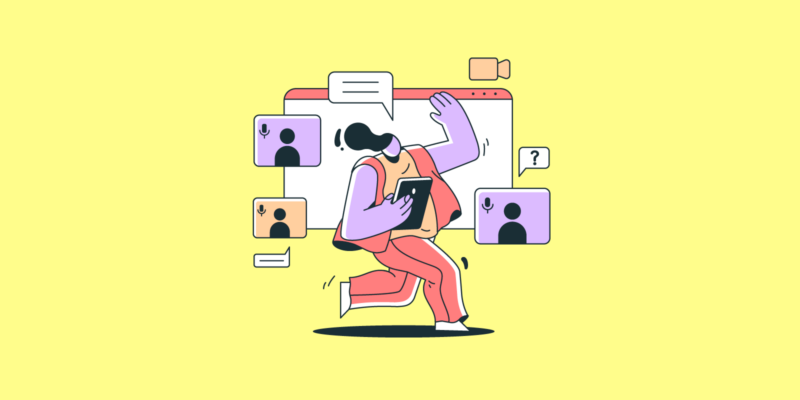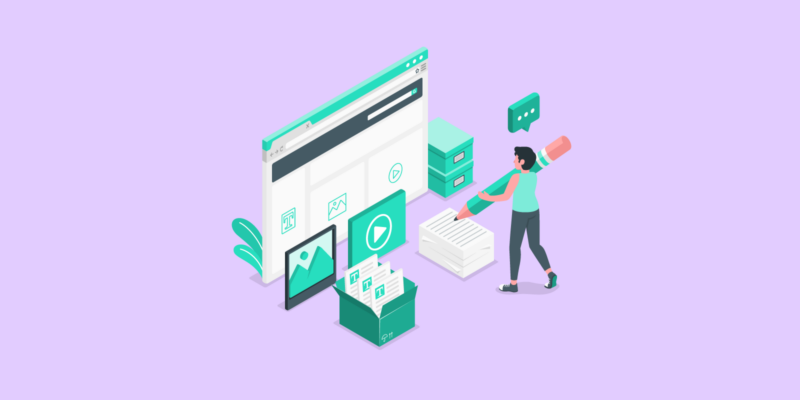If you’re running a business, you’re probably using social media to grow and engage your audience. More than likely, though, you plan to do more than just share content online. You’ll want to channel visitors to your site and turn them into subscribers or customers.
That’s where social media landing pages come into play.
This post will discuss everything you ought to know about social media landing pages. It will also cover some best practice principles you should follow to maximize your conversion rate so you can grow your business.
In this article
What Is A Social Media Landing Page?
A social media landing page is a standalone page created specifically for a marketing campaign. Your social media landing page might be designed to get people to answer a questionnaire, sign up to your email list, or something else entirely. People will access this page when they click on a social media ad or a link you share through social media.
Here is an example of a social media campaign that leads to a landing page:
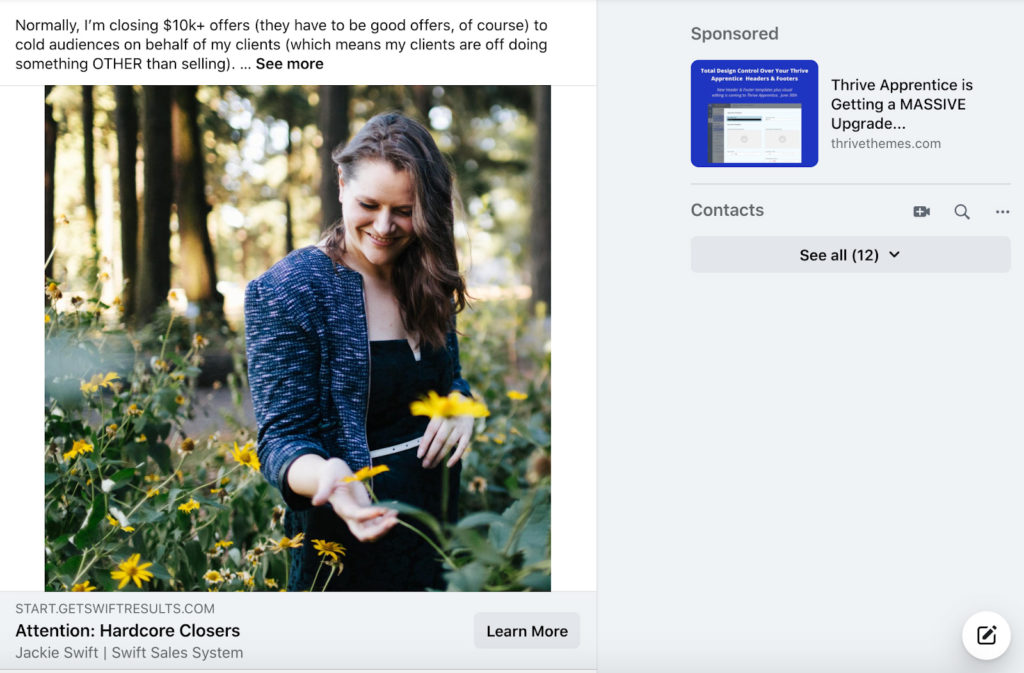
Clicking on the “Learn More” button takes users to the landing page below:

The landing page should be designed to generate one outcome. In this case, the idea is to get the person who clicks on the ad to purchase the product.
Why You Need A Social Media Landing Page
As touched on earlier, you can create a social media landing page for different purposes. For example, you could create a landing page to sell a product or service, grow your email list, get people to answer questionnaires, etc.
Businesses use social media landing pages because they help them convert prospects. For example, if your goal is to grow your email list, you’ll get a higher conversion rate if you send visitors to a dedicated page created to convert visitors into subscribers than if you just sent them to your blog.
Through a social media landing page, you gain a high degree of control over the user experience. By sending them to a custom page with one clear goal, you significantly increase the chance of the visitor taking the action you desire.
If you’re running paid advertising, improved conversions mean more bang for your buck.
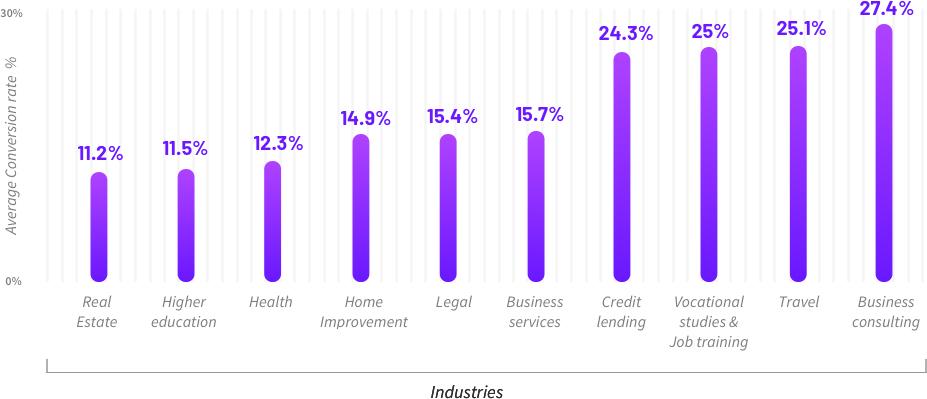
The graph above provides a nice sense of the conversion rates you can get from an optimized landing page across different sectors. Your conversion rate will depend on the goal you are trying to achieve, the niche you are operating in, and the page’s design.
8 tips to help you create an effective social media landing page
Now that you know why social media landing pages play a crucial role in your digital marketing campaigns, let’s talk about ways to use them effectively to generate more conversions.
1. Create a simple design
Great landing pages have a simple design and clear messaging. A visitor landing on the page should understand its purpose almost immediately.
Luckily, this is fairly straightforward. Marketers have been designing landing pages since people figured out you could sell things online. Most landing page builders, like Woorise, give users access to pre-made easy to edit templates.
These templates are easy to edit and designed to convert. They’ll have a prominent headline, a sub-headline, space for a hero image, and a button with an obvious Call to Action (CTA). Here’s a nice example of a well designed social media landing page
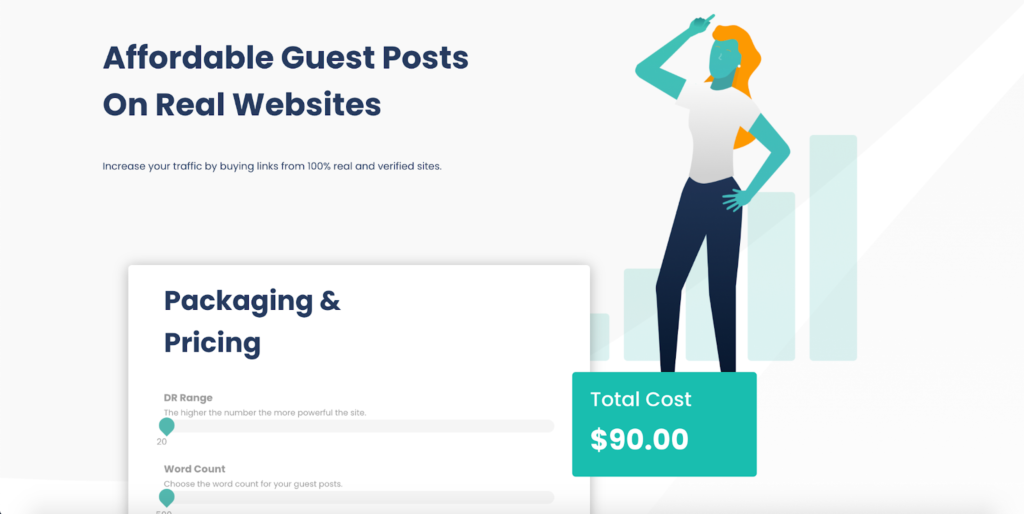
The screenshot is above the fold. There’s the title, subheadline, and a pricing widget.
It’s clear what is being offered on the page.
If you scroll down the page, there’s additional content designed to make a person want to take the prescribed action – that involves addressing pain points. We will discuss all the elements above in more detail later on. Keep in mind, though, that the goal of a landing page is to generate a conversion. You should only use elements that contribute toward that goal.
2. Write an attention-grabbing headline
The most important element of your landing page is the title. You need to grab the attention of the visitor and make them want to take a specific action.
Let me give you a nice example.
Below is a video ad on Facebook from a clothing company.
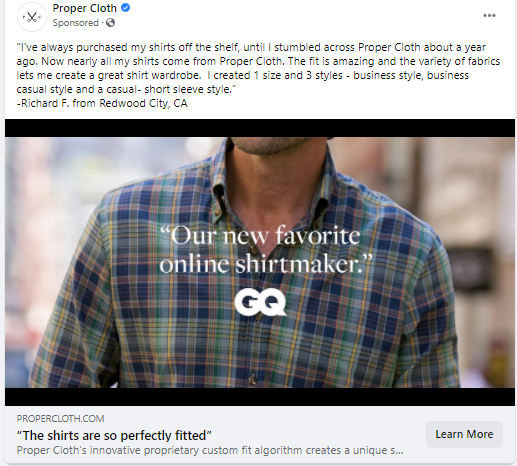
If you click on “Learn More”, you’ll land on the following social media landing page.
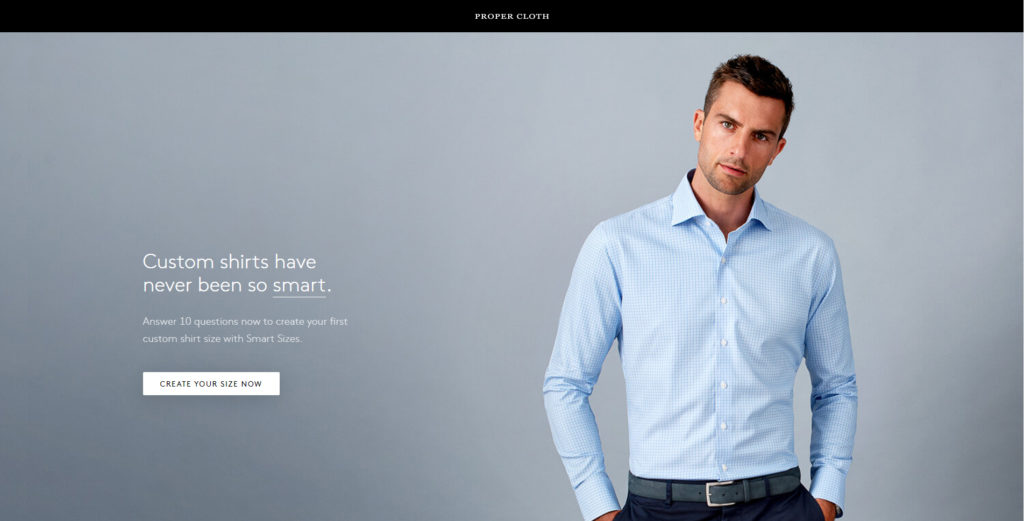
As mentioned previously, the landing page has a simple design, which is important. You can easily find the CTA as it contrasts sharply with the background.
The headline is designed to generate curiosity and appeals to a target demographic: Custom shirts have never been so smart.
In case you missed it, the target audience is males who are looking for custom-fitted shirts. The hook here is you can get a custom shirt that is “smart”, whatever it is. Then you read the rest of the copy and all it takes to create your first custom shirt is answering a 10-question quiz that helps you get a shirt in just the right size for your body.
The most important thing about your headline is it calls out to your target demographic and transmits what they can expect from the page. Here’s a list of headline generators you can try if you need help coming up with a great headline.
3. Optimize your landing page for mobile devices
Most people access social media through a mobile device. That means your social media landing pages need to be optimized for mobile. You can check this pretty easily by seeing what your page looks like on your phone.
If you have any issues, you’ll need to fix them.
Here are some ways you can optimize your landing page for mobile:
- Use a responsive web page design: Static page designs become distorted when viewed using a mobile browser. Using a responsive web page design will help prevent that by automatically resizing page elements so that they’ll fit on mobile screens of different sizes.
- Reduce image size: Larger images usually result in slower page load speed. This increases page bounce rates and reduces your conversion rate.
- Auto-fill functionality: Adding an auto-fill functionality, for example filling in email address and name automatically, or address automatically, is especially useful for mobile.
- Remove distracting elements: Some things that could work in a desktop browser won’t work quite well when viewed using a mobile browser. Background images, for example, could keep users from finding the CTA button.
Optimizing your social media landing page for mobile devices will help you give your users a better user experience. Mobile optimized landing pages will have a higher conversion rate.
4. Make sure your branding is clear
Your social media accounts are extensions of your brand. You should treat your landing pages the same way. However, you should go beyond adding the logo to your landing pages and start enforcing a uniform brand identity across all of your digital assets.
For example, you need to be consistent with your use of colors and image choices, regardless of the platform they will appear on. To illustrate this concept, let’s look at the Facebook ad for DataCamp below:
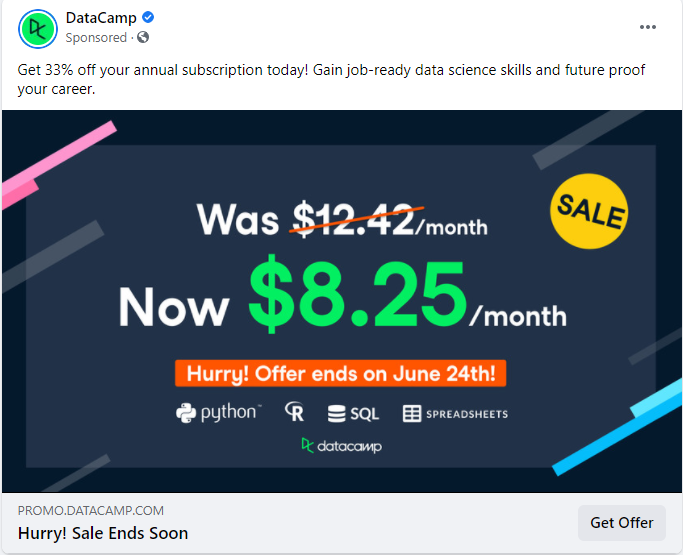
When you click on “Get Offer”, you land on the page:
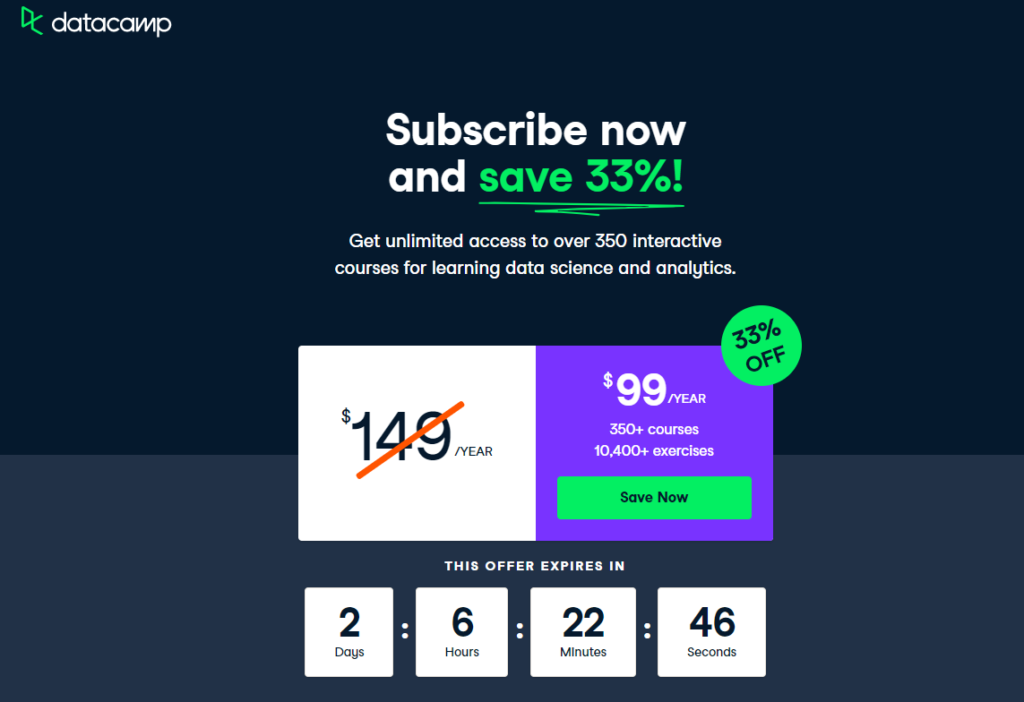
The Facebook ad and landing page have a few things in common.
First, you will notice that the color neon green figures prominently in both screenshots. Second, the background for both assets consists of different shades of black and gray. Finally, the logo is scaled properly in both examples. Even if the sizes are different, the height-to-width ratio is the same for both.
By keeping brand elements the same across different marketing channels, you strengthen your brand and improve customer recall.
5. Keep your message consistent
Whenever you create something that promotes your brand, it should be consistent with what your other marketing channels are saying. You can’t say one thing on Facebook then say something else on your landing page. Doing so will confuse your audience and make them less likely to convert.
Keeping your message consistent will build your customers’ trust in your brand.
When creating your social content and landing page, ensure that the images are of the same product or service. If a user clicks on a photo of in-ear wireless earphones but gets redirected to a landing page where the image is that of professional-level wired headphones, they might think that you’re trying to pull a fast one on them.
Second, you need to ensure that the prices are the same for both the social media post and the landing page. For example, the Facebook post from JBL below is consistent with its pricing for the JBL Reflect Mini NC earphones:
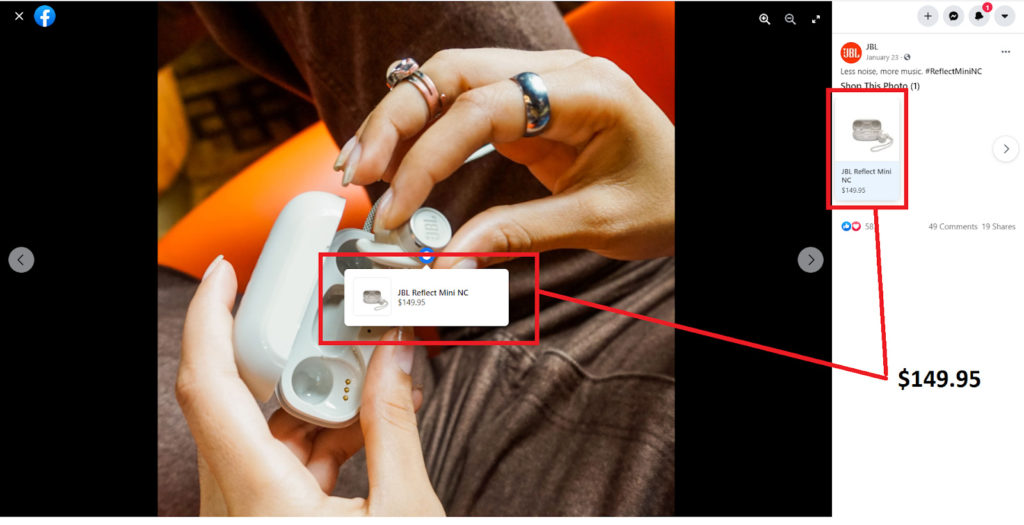
Clicking on either link will take you to this Facebook product page:
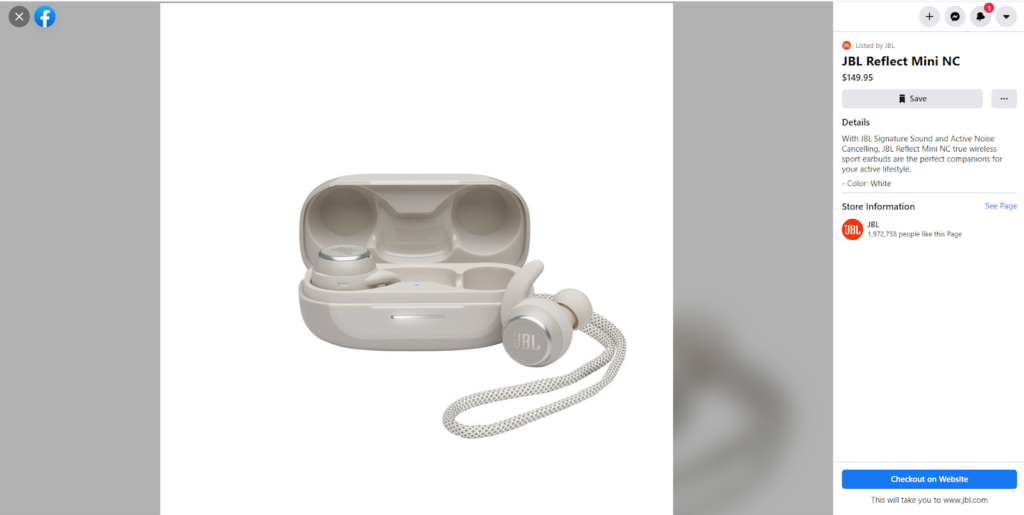
Clicking on the “Checkout on Website” button will then take you to this page:
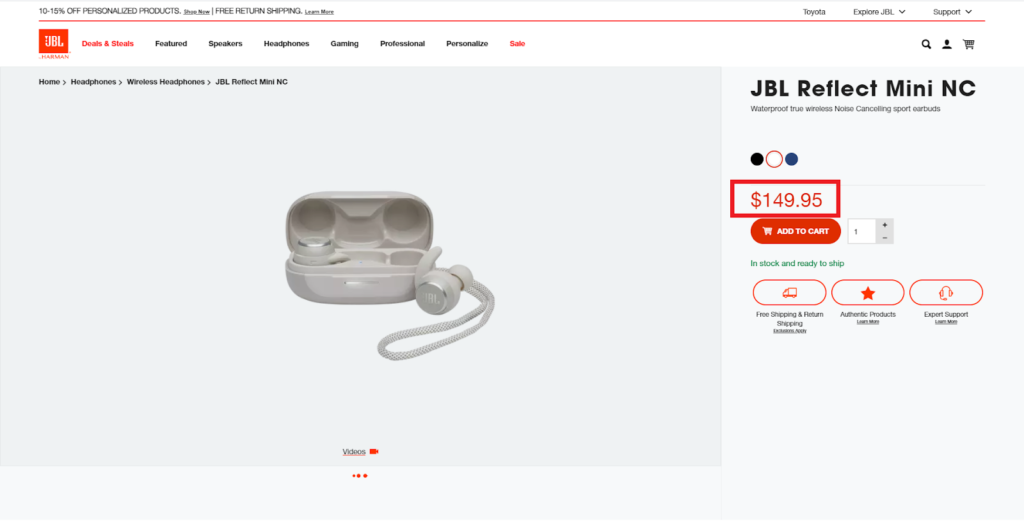
The images and prices for all three pages are similar, if not identical, to each other. As a consumer, I am confident I can browse through the JBL Facebook page, knowing that the price and product will be consistent throughout my entire buyer journey.
6. Use a strong CTA
The call-to-action (CTA) button is arguably the most crucial element in a landing page. While the text and visual elements give the user the information they need to make a decision, a well-designed CTA button convinces them to do the action you want them to do.
Below, you can see an example of a simple but effective CTA:
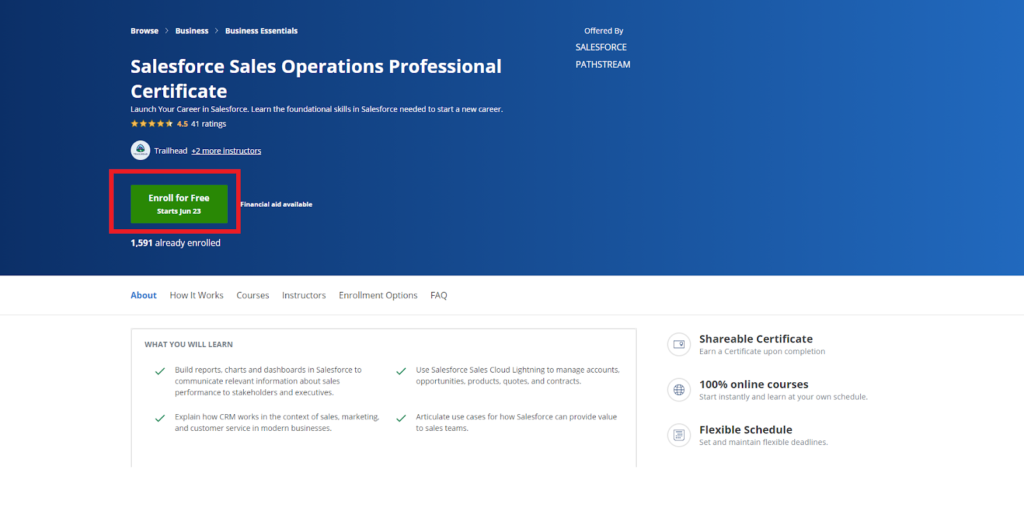
Three main elements make up the CTA. First, the color of the button contrasts with the background. It’s hard to miss it. Second, the text “Enroll for Free” offers the user the opportunity to learn a new skill without spending a dime. Finally, below the main button text, you can find the phrase “Starts Jun 23”, which adds a bit of urgency to the copy.
When you design a CTA, it’s best to aim for clarity. You need to resist the urge to make the copy too long. You also need to avoid using buzzwords, especially if they are not relevant to your brand and product. Instead, you may use words or phrases that yield positive actions as long as you are transparent about what you’re offering.
7. Add visual elements
Visual elements reinforce the written copy in your landing pages by giving users a glimpse into your products or explaining product features. Research conducted at MIT shows that the brain can process and identify images in just a few milliseconds – a lot faster than most individuals’ reading speeds.
Adding visual elements to landing pages can help convince your audience to click on the CTA even before they’ve finished reading the text. While most digital marketers use static images on landing pages, others use videos:
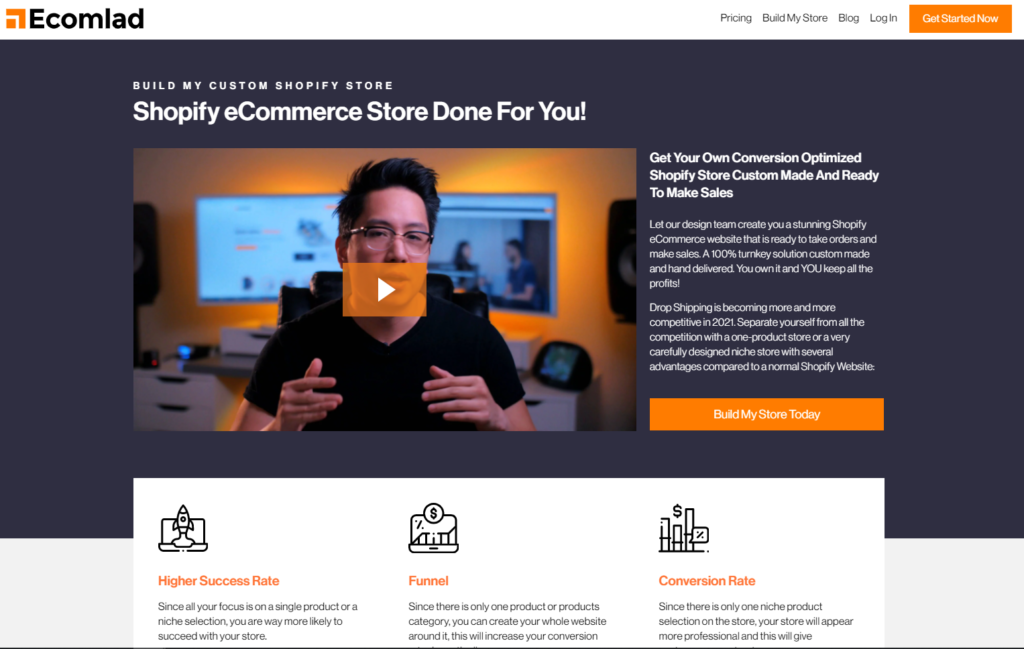
The video on the landing page above discusses how easy it is to build a Shopify store and get more sales on Shopify using Ecomlad’s services. It’s just a one-minute video, but it’s gotten me excited about the possibility of running my own business in just a few clicks.
My only issue with the video is that the speaker tells me to go to the form at the bottom of the page when they could’ve just told me to click on the CTA button to the right. Overall, though, it’s a great landing page with a video that manages to convince the viewer to give Ecomlad another look.
8. Use A/B testing
One of my core principles as a digital marketer is that there is always a better way of doing things. If something works well now, something else might work better tomorrow. As a marketer, your goal is to keep increasing conversions and revenue. Otherwise, the competitor might overtake you.
Performing A/B testing on your social media landing pages will allow you to experiment with different combinations of elements so that you’ll come up with a design that maximizes clicks. For example, you can change the image for one A/B test and then change the CTA button’s color in the next test.
However, you need to test just one or two elements at any given time. Changing multiple elements will not give you an accurate idea of the things that work better. A/B testing can be a tedious process, but the results in higher conversion rates are worth all the effort you put into it.
In Closing
Social media landing pages combine the reach and versatility of social media with the effectiveness of landing pages. However, there is no single right or wrong way of creating social media landing pages, just a set of best practices that you can follow to maximize their effectiveness.
I hope that the tips and examples I’ve given inspire you to create better landing pages. Remember to keep things simple and readable, use a strong call-to-action, maintain consistency in your messaging and branding, and keep testing new combinations to find a design that gives you the best results. Keep plugging away, and you’ll see the fruits of your labor soon!


